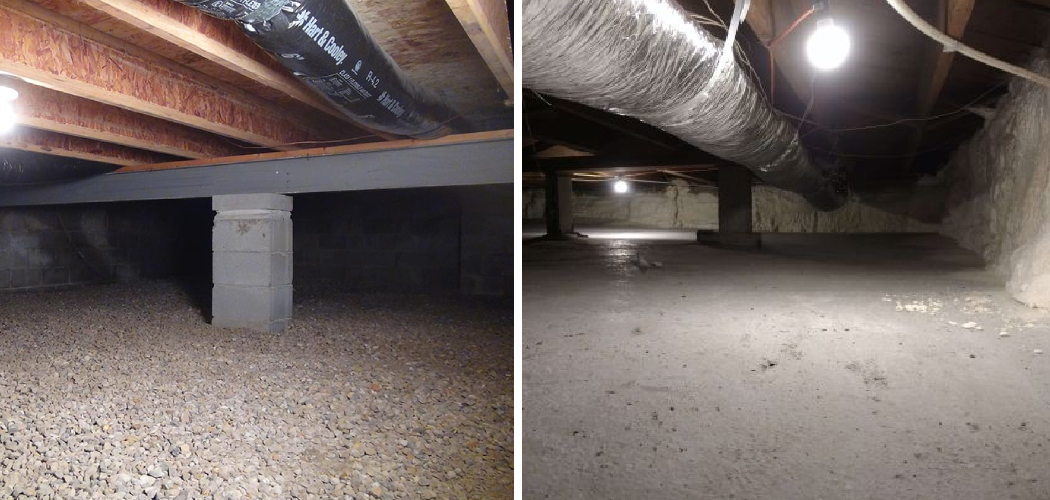Are you tired of dealing with an uneven or sagging crawl space floor? A level and sturdy crawl space is essential for maintaining the structural integrity of your home and preventing issues like moisture infiltration and foundation damage. Fortunately, leveling a crawl space floor is a feasible DIY project that can be accomplished with the right tools and techniques.
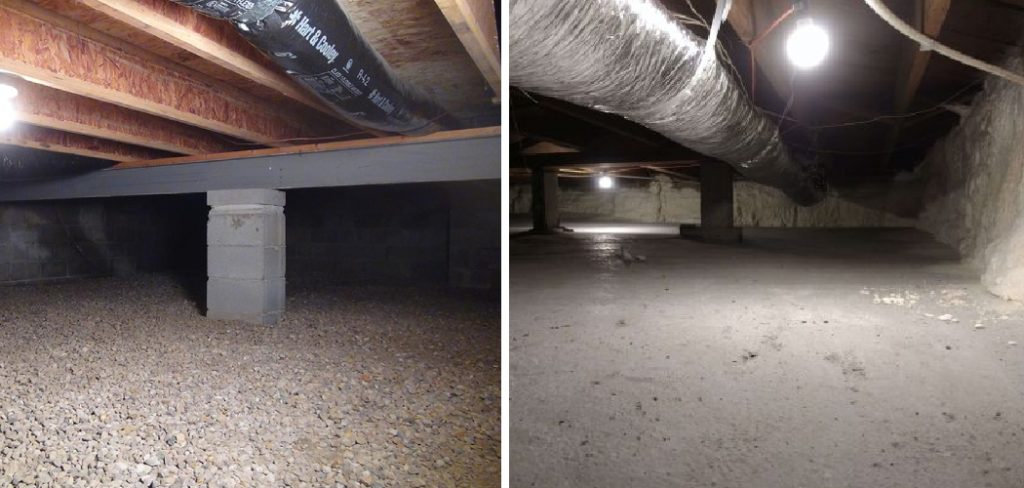
In this article, we will guide you through the process of leveling a crawl space floor, providing you with step-by-step instructions and helpful tips on how to level crawl space floor. From assessing the condition of your crawl space to preparing the area for leveling and finally implementing the leveling solution, we will cover all the necessary aspects to ensure a successful outcome.
So, roll up your sleeves and get ready to transform your crawl space into a stable foundation that promotes a healthier and more secure home environment.
The Importance of a Level Crawl Space Floor
A level crawl space floor is essential for maintaining the integrity of your home. If the floor isn’t level, it can lead to structural damage, such as uneven walls, cracking, and buckling. It also enhances comfort levels in your home by ensuring better air circulation and temperature control. Furthermore, a level basement floor allows proper drainage of water away from the foundation, preventing water damage and mold growth.
There are two ways to level a crawl space floor: manually or with a self-leveling compound. Manual leveling can be done by using hydraulic jacks, shims, and pry bars to level the joists and fill material. Self-leveling compounds use a cement mixture that will quickly spread over the surface of the floor, filling in any low spots or gaps for a smooth finish.
Either way, you should always consult a professional before attempting to level your crawl space floor yourself. It’s important to ensure that everything is properly installed and secure to avoid damaging your home’s foundation or causing more serious structural issues. Doing it yourself also carries some risks of injury and incorrect installation, so it’s best to leave this task to the professionals.
The Benefits of Having a Level Floor
Having a level floor in your crawl space is beneficial for both safety and efficiency. A leveled floor can prevent costly foundation damage, improve indoor air quality, reduce energy bills, and enhance the overall structural integrity of your home.
A leveled crawl space floor eliminates gaps which can allow water to enter from outside or seepage from inside. This will help to keep moisture levels down and protect the insulation from becoming damaged by mold growth. As an added bonus, a leveled floor makes it easier to access the underside of your home should you ever need repairs or maintenance.
Aside from improving indoor air quality, having a level crawl space floor also helps with energy efficiency. An even surface enables air flow more freely throughout the area and, when coupled with proper insulation, can reduce heating and cooling costs. It also provides better support for the HVAC system and prevents it from shaking or vibrating during operation.
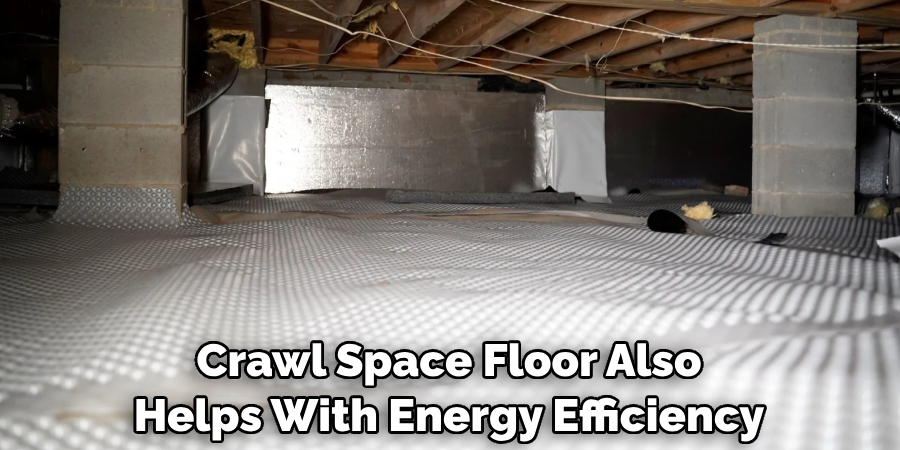
Finally, having a level crawl space floor plays an important role in the structural integrity of your home. An uneven surface can cause settling issues which can lead to cracks in drywall, bowing walls, and other serious foundation damage. Leveling the floor helps to prevent these costly problems before they even start.
10 Methods How to Level Crawl Space Floor
1. Assessing the Condition:
Before beginning any leveling work, it’s crucial to assess the condition of the crawl space floor. Inspect for signs of sagging, moisture damage, or structural issues. Identify the root cause of the problem to determine the appropriate leveling method.
However, if the soil beneath the floor is too soft or unstable, it may need to be stabilized before leveling can begin. Try to identify any sources of water intrusion, such as leaky pipes or high moisture levels, and address them before beginning the leveling process. However, if the floor is structurally sound, you can move onto the next step.
2. Soil Stabilization:
Uneven floors can result from unstable soil. One method to level the crawl space floor is by stabilizing the soil using techniques such as soil compaction, adding fill materials, or installing helical piers to provide a solid foundation. Though this method can be expensive, the results are long-lasting and provide a stable base for any future flooring installations.
The crawl space should be cleaned and inspected prior to making any repairs to ensure the structural integrity of the home. However, if the soil is particularly unstable, it may be necessary to reinforce the space with steel beams or concrete blocks. Make sure to consult a professional before beginning any soil stabilization project as it is important to meet all local building codes.
3. Jacking and Shimming:
If the crawl space floor is sagging in specific areas, jacking and shimming can be an effective solution. This method involves using hydraulic jacks to lift and level the sagging sections, and then inserting shims to maintain the desired height.
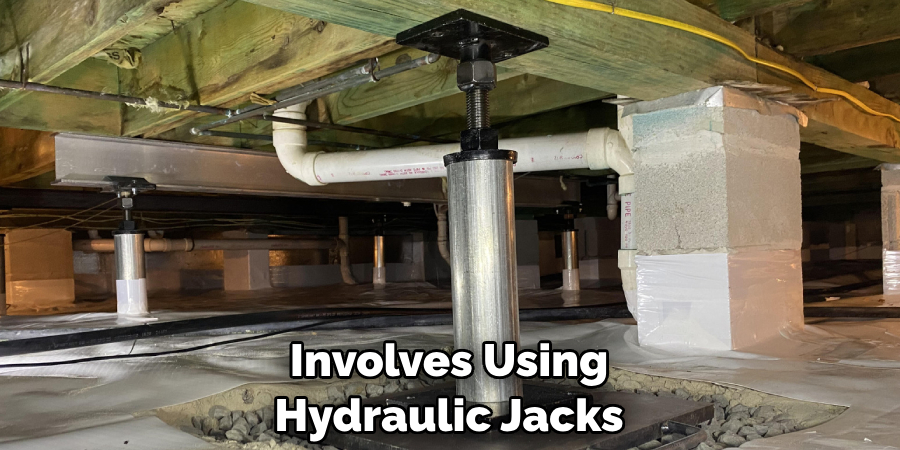
While this may be a suitable option for minor sagging, it is not always the best solution for more serious issues. It can also be difficult to gain access to the jacks and shims in order to make adjustments, so it is not recommended for DIY projects. While this is an effective way to level a crawl space floor, it should only be attempted by experienced professionals. However, it can provide a durable and long-term solution to sagging floors.
4. Concrete Pouring:
Pouring a new layer of concrete is another approach to level the crawl space floor. This method requires proper preparation, including cleaning the existing floor, applying bonding agents, and creating a level surface with the new concrete mix. You may need to rent a concrete mixer and other necessary tools before beginning the process.
Once complete, you can add a waterproof coating or sealant for additional protection. While this approach is more involved and time-consuming, it can provide a long-term solution for leveling the crawl space floor and protecting against moisture damage. Additionally, it can be more cost-effective than other solutions depending on the size of the crawl space.
5. Self-Leveling Compounds:
Self-leveling compounds are a popular choice for minor floor leveling. These mixtures, typically made of cement and polymers, flow into low areas and automatically level the surface as they dry, providing a smooth and even finish.
Self-leveling compounds are easy to apply, and they dry quickly. However, they can be expensive depending on the size of the space you need to level. Additionally, self-leveling compounds are rigid and don’t provide any cushioning or insulation. Therefore, you should only use them if the crawl space will not be used for living space.
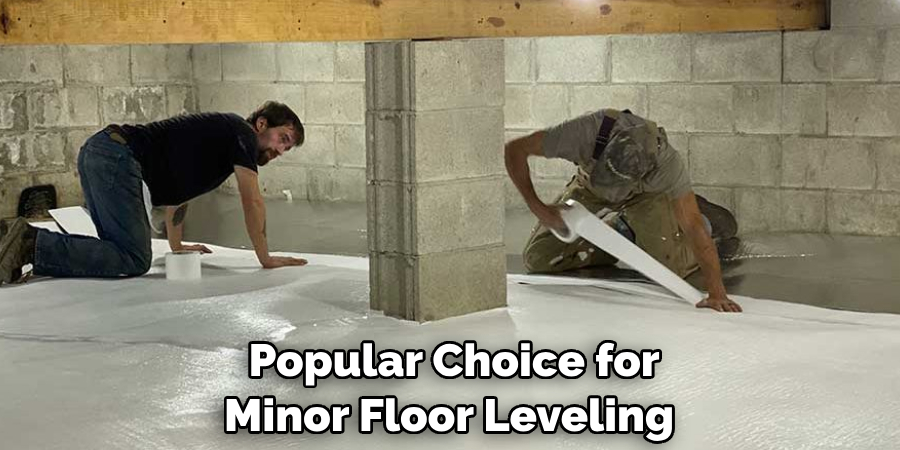
6. Floor Joist Adjustments:
In some cases, an uneven crawl space floor may be due to issues with the floor joists. Adjusting the joists by adding support beams, reinforcing with sister joists, or replacing damaged joists can help level the floor.
However, this is an advanced repair that should only be undertaken with the help of a professional. If you suspect joist problems are causing your crawl space floor to be uneven, contact an experienced contractor who can evaluate the situation and determine the best solution.
7. Vapor Barrier Adjustment:
A crawl space with improper or damaged vapor barriers can lead to moisture-related problems and floor settlement. Adjusting or installing a vapor barrier can help regulate moisture levels and prevent further floor movement.
The type of barrier used will depend on the site conditions and moisture levels present in the crawl space. You should consult a professional for advice. Once the barrier is in place, lay 6-8 mil plastic sheeting over the entire area and secure it with nails or staples. Additionally, consider installing a dehumidifier to reduce humidity and further protect your crawl space floors.
8. Foam Injection:
Foam injection is a technique that involves injecting expanding polyurethane foam into voids and gaps beneath the crawl space floor. The foam expands and hardens, providing structural support and leveling the floor. It is important to use a closed-cell foam that won’t be affected by moisture. Foam injection can also be used in combination with other methods to provide additional support in difficult areas.
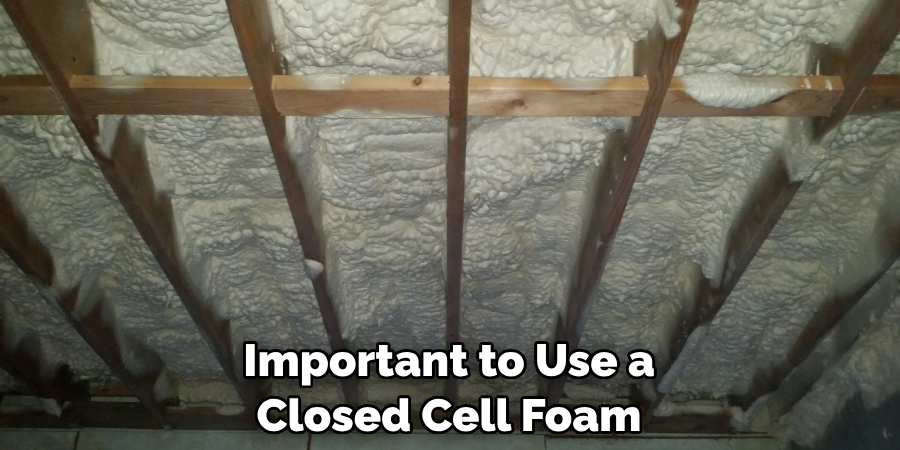
Before starting, you should remove any debris or obstructions from the space to ensure the foam is able to reach the entire area. After injecting the foam, you should allow it to dry and harden for several hours or overnight before walking on the crawl space floor. Foam injection is an effective way to level a crawl space floor, but may require additional labor and materials to complete the job.
9. Professional Foundation Repair:
For severe crawl space floor issues or complex structural problems, consulting with a professional foundation repair specialist is recommended. They can assess the situation and recommend the most appropriate and effective leveling methods. The repair specialist can also provide advice on preventing future damage to the crawl space floor.
Professional foundation repair usually involves waterproofing and sealing the area, installation of structural supports, and in some cases, the installation of a vapor barrier to reduce moisture levels. It is important to use qualified professionals who have experience in crawl space floor repair for the most effective and long-term solution.
10. Regular Maintenance:
Once the crawl space floor is leveled, it’s important to implement regular maintenance practices. This includes monitoring moisture levels, ensuring proper ventilation, and addressing any signs of settlement or damage promptly to prevent future issues. Additionally, be sure to inspect the crawl space frequently and remove any debris or standing water that may accumulate.
Proper maintenance can help maintain a level crawl space floor for many years. However, if any issues arise, it’s essential to contact a professional and address them immediately. Doing so can help ensure the crawl space floor remains level for a long time.
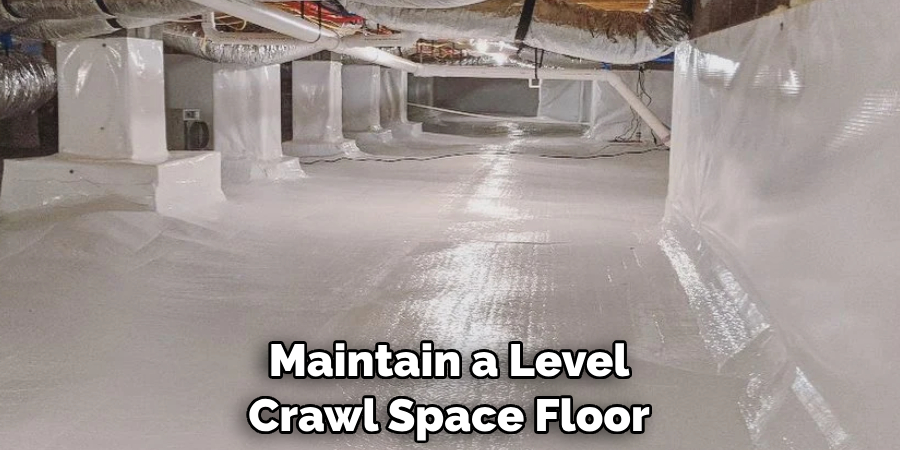
Conclusion
Leveling a crawl space can be a daunting process, but with the help of the right tools and some patience, anyone can do it. Whether you choose to use shims or a leveling compound, make sure you’re thorough when leveling your crawl space so nothing gets overlooked. With the project finished you’ll have greater peace of mind knowing that your property is safe and secure.
Remember to always exercise due diligence while conducting projects like this – if something doesn’t look or feel right, it’s better to be safe rather than sorry. When in doubt, consult an expert for advice so that any potential problems are addressed before disaster strikes. Now that you know how to level crawl space floor, why not get started on your own project? It’s time to show off those home improvement skills!
